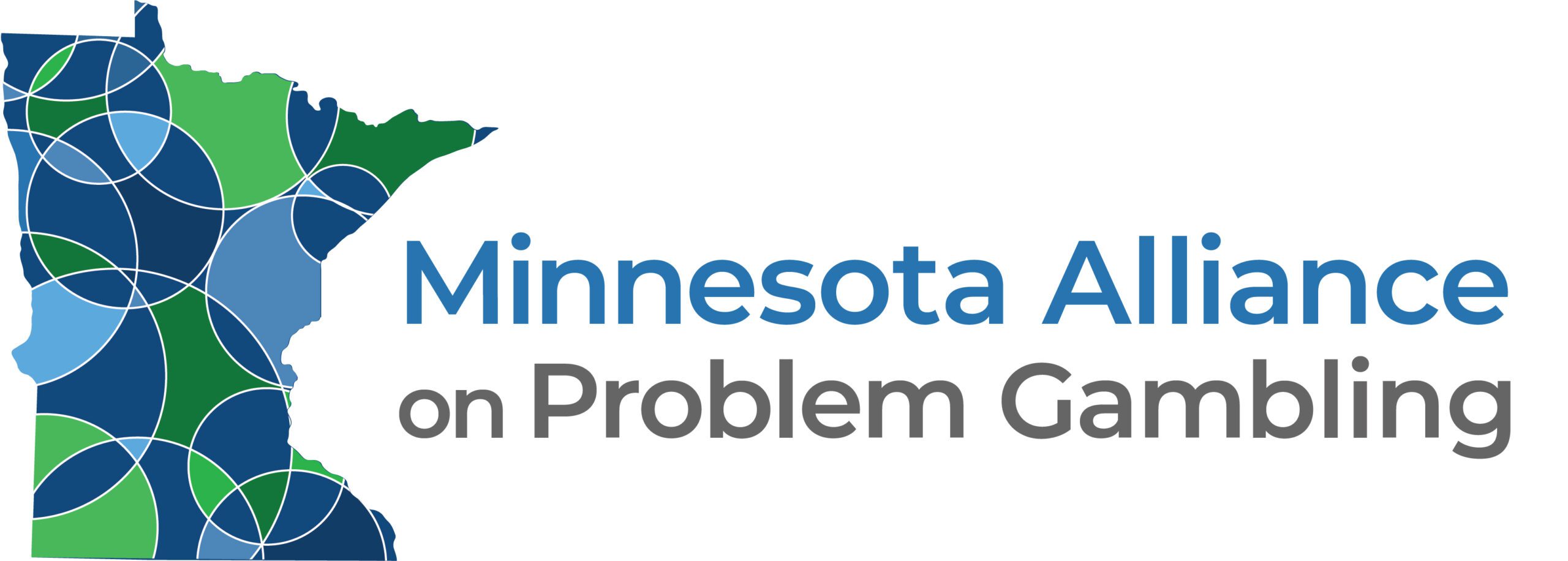
Jan 10, 2022 | PROBLEM GAMBLING, RESEARCH
Read the original article on The BASIS website.
By Matthew Tom, PhD
Many video games provide players with opportunities to purchase in-game items after they’ve already started playing. If these items give players a better chance of advancing in the game or help players stay competitive in online matches against other players, then the game is called Pay-to-Win (P2W). Some researchers have noted parallels between P2W games and some forms of gambling. For example, both can tap into people’s competitive spirits, getting them to spend more than they might otherwise. In this last week of 2021, as millions try out the new toys and games they received as holiday gifts, The WAGER reviews a study by Fred Steinmetz and colleagues that explores possible links between purchasing in P2W games, problems controlling gambling, and between gambling participation and problems controlling P2W purchasing.
What was the research question?
Are there associations between aspects of pay-to-win purchases in video games and problems controlling gambling?
What did the researchers do?
The researchers acquired data from the German online panel of the e-GAMES (Electronic Gam(bl)ing: Multinational Empirical Surveys). Participants responded to survey items related to (1) demographics, (2) participation in various gambling games, (3) number of payments and (4) total amount paid in P2W game purchases, and (5) motivations for making P2W purchases. Participants also filled out a screener questionnaire that measures risks associated with gambling (the Problem Gambling Severity Index; PGSI) and an analogous screener for risks associated with P2W game purchases (the PGSI modified for Pay-to-Win gaming, yielding a “P2W risk score”). The researchers used data from the 700 participants who both gambled online and were P2W players. They used linear regression models to estimate the associations between gambling activity and P2W risk score, between P2W purchasing and PGSI score, and between P2W risk score and PGSI score.
What did they find?
Gambling by itself was not a risk factor for problems with P2W games. However, extreme levels of gambling were. More specifically, participation in any of the eight forms of gambling listed in the survey had no or very small associations with P2W risk scores (see Figure), but people who spent more money on gambling, and those who had relatively high PGSI scores, had higher P2W risk scores. The reverse was also true; higher P2W risk scores and more frequent P2W purchases both predicted higher PGSI scores. However, in contrast, spending more money on P2W purchases was linked to lower PGSI scores.

Figure. Gambling activities used in linear regressions to predict pay-to-win risk score in Steinmetz et al. (2021).
Why do these findings matter?
Simply participating in P2W gaming does not appear to increase the risk for gambling problems, or vice versa. However, excessively participating in one activity was linked with excessively participating in the other activity. There could be something connecting problems with one form of entertainment and problems with the other. For example, some P2W games contain gambling mechanics (e.g., loot boxes), so it is possible that these items are serving as substitutes for traditional gambling for some people. These findings suggest that those who experience problems with gambling should avoid getting deeply involved with P2W games, and that those who have had issues with P2W games should be careful around gambling.
Every study has limitations. What are the limitations in this study?
This survey was cross-sectional, so the researchers could not determine whether the problems with P2W games caused problems with gambling or vice versa. The screener for problems with P2W games has not been validated, so the risk score measured might not represent risk of harm accurately.
For more information: As publishers release new games, and add loot boxes and P2W mechanics to current games, fans and players with mathematical savvy post articles with their calculations of the utility (or lack thereof) of these items on forums such as Reddit. Much like with many forms of gambling, educating oneself about the games and how they function is one possible step towards preventing these games from creating problems in the future.
If you think you might have trouble controlling your video gaming (or gambling), resources are available for gaming and for gambling. Additional resources, including gambling and self-help tools, can be found on our Addiction Resources page.
— Matthew Tom, PhD

Nov 28, 2021 | RESEARCH, SPORTS BETTING
Read the original article on The BASIS website.
By: Caitlyn Fong
Cryptocurrency, or “crypto”, is a digital currency that can be used to buy goods and services, or be traded for profit, with similarities with day trading on the stock market. Day trading itself is similar to gambling in some ways, and many day traders are also heavy bettors. Crypto trading is emerging as a similarly risky gambling-like activity. This week, The WAGER reviews a study by Paul Delfabbro and colleagues that investigated the gambling and stock trading habits of sports bettors, cryptocurrency traders, and people who do both.
What was the research question?
How do gambling habits, problem gambling rates, and prevalence of stock trading differ between sports bettors, crypto traders, and people who do both?
What did the researchers do?
The researchers surveyed 543 participants who reported gambling on sports or trading cryptocurrency at least once per month during the previous year. An international sample was recruited from the online platform Prolific and participants answered questions related to their gambling habits, crypto trading, and stock trading. Participants also completed the Problem Gambling Severity Index (PGSI). Then, the researchers compared three groups of participants: (1) those who only gambled on sports, (2) those who only traded cryptocurrency, and (3) those who did both.
What did they find?
Individuals who reported both crypto trading and sports wagering were more likely to have engaged in casino card games, race betting, and slots than those who reported either crypto trading or sports betting. Compared to sports bettors and those who did both, participants who only traded cryptocurrencies were less likely to gamble on all activities. The cryptocurrency-only group also had the lowest rates of moderate risk and problem gambling. Individuals who engaged in both crypto trading and sports wagering had significantly higher rates of moderate risk and problem gambling compared to sports bettors (see Figure). Importantly, however, 9.5% of the cryptocurrency-only group scored above the threshold for problem gambling on the PGSI, which is higher than the general population estimate of 0.5-2.0%. Stock trading was most likely to be reported by those who both traded cryptocurrency and wagered on sports.

Figure. Comparing the percent of participants in each group based on activities engaged in at least once per month during the past year whose PGSI score indicated moderate risk gambling or problem gambling. The difference between groups was statistically significant.
Why do these findings matter?
The results show that crypto trading on its own is associated with increased problem gambling risk. Trading cryptocurrency also appears to amplify the risk of gambling alone, with those engaging in both activities most likely to experience gambling-related problems. Additionally, researchers have raised concerns that crypto trading has addictive qualities. Trading cryptocurrency is popular among gamblers, and should be incorporated into problem gambling screening and assessment protocols.
Every study has limitations. What are the limitations in this study?
This study was cross-sectional, so we cannot conclude whether trading cryptocurrency causes an increased risk for problem gambling or whether those already experiencing problem gambling have a greater inclination to engage in crypto trading. The study also relied on self-reported data, so participants might have under- or over-reported their actual gambling and/or crypto-related behaviors.
For more information:
Do you think you or someone you know has a gambling problem? Visit the National Council on Problem Gambling for screening tools and resources.
— Caitlyn Fong, MPH

Nov 24, 2021 | ADVOCACY, PROBLEM GAMBLING, RESEARCH, RESOURCES
In the second of a series profiling organizations receiving grants from Minnesota’s Department of Human Services (DHS), this issue of Northern Light features Asian Media Access.
Asian Media Access (AMA) is a comprehensive community media arts education agency supporting creative solutions for problems facing the Asian American & Pacific Islander (AAPI) community through education, production, information technology and community organizing. It’s bringing its resources and mission to bear on the issue of problem gambling to this community.
AMA’s effort began with research to understand more about the cultural impacts creating different problem gambling behaviors. They conducted interviews with 25 members of the AAPI community representing different ethnicities and social status.
“We found that our communities share the secrecy surrounding problem gambling like other communities,” says AMA founder and executive director Ange Hwang. “There is the challenge of people recognizing that they have a gambling problem and seeking help.”
According to Ange, approximately 25% of those interviewed say they gamble because they want more money. In one instance, a woman with low income explained she hoped to get more money to support newborns. “This type of thinking was a surprise to us as we thought they might gamble because they needed an escape from the stress of trying to speak English.”
“Many think that gambling, even in small amounts, is the best route to get more money,” says Ange. “We need to change that mindset so that people understand that if you lose a little, it’s still a large percentage of their assets. We’re trying to find a new way to discuss this with the community.”
The AAPI community uses a communication style that’s different than the Eurocentric way of contacting a hotline and talking to a counselor. Thus, the goal is to create messages that can become immersed in the environment so that it starts to build context and trust.
Another emphasis is to educate members of the community about the importance of financial management. “Many people don’t have exposure to mainstream society and don’t understand the complex financial structure present in the U.S.”
AMA is working to share messages in a variety of ways, including brochures, educational workshops and in-person. “From past experience, we know it’s hard for people to come and say, ‘Yes, I’m a problem gambler and need this workshop,” says Ange. The use of creative materials to open up community discussion is part of a four-year process.
AMA will also be creating YouTube videos that they can present at events and share through social circles. They’ve also started a youth group of “cultural brokers” that will use the heritage language to create postcards and other items that will be circulated to the community. “Communication through heritage language is a key for members who don’t know English,” says Ange.
AMA is collaborating with various organizations to educate the community about problem gambling. These include Asian temples in the Twin Cities, local chambers of commerce, restaurant owners and other organizations that help those new to the area.

Oct 14, 2021 | PROBLEM GAMBLING, RECOVERY, RESEARCH
Read the original article on The BASIS website.
Problem gambling occurs more frequently among men, but it is still present among women and is understudied in this population. Gambling Disorder (GD) refers to persistent and problematic gambling behavior leading to distress, and that causes financial, relationship, and psychological harm. The effectiveness of GD treatment has received limited attention in the scientific literature. Common factors that might influence treatment effectiveness include discontinuing treatment and relapse. This week, The WAGER reviews a study by Marta Baño and colleagues that examined the short-term therapy outcomes of group CBT among women with Gambling Disorder.
What were the research questions?
What is the short-term effectiveness of group standardized cognitive behavioral therapy (CBT) among women with GD? Also, what are the most important predictors of primary therapy outcomes (discontinuing treatment and relapse)?
What did the researchers do?
The researchers assigned 214 women seeking treatment for Gambling Disorder at the Pathological Gambling and Behavioral Addictions Unit at the Bellvitge University Hospital in Barcelona, Spain to a group CBT program. Participants attended weekly 90-minute sessions for 16 weeks and learned CBT strategies to recondition cognitive distortions and improve emotional regulation, with the ultimate goal of absolute and continued abstinence from all gambling behavior. These CBT strategies included education on vulnerability factors, ways to avoid possible triggers, and how to respond to urges with alternative healthier behaviors. The researchers used logistic regression, negative binomial regression, and survival analysis to assess predictors of discontinuing treatment and relapse.
What did they find?
During the course of treatment in the study, 90 women (42%) skipped three consecutive treatment sessions and 77 women (36%) had at least one relapse. Women with relatively less severe Gambling Disorder, and experiencing greater psychological distress, were more likely to discontinue treatment. On the other hand, relapse risk was higher among women with lower education levels, those without gambling-related debt, and divorced women. Drug use (other than smoking), placing more maximum bets per gambling-episode1, preferring gambling games that rely on chance alone such as bingo or slot machines2, and lower socioeconomic status were also associated with higher relapse rates during CBT (see Figure).

Figure. Statistically significant predictors of primary therapy outcomes—discontinuing treatment and relapses— among women in CBT treatment for Gambling Disorder (n = 214). Arrows indicate significant predictors of either discontinuing treatment or relapse.
Why do these findings matter?
Learning more about female gambling behavior and identifying specific predictors of discontinuing treatment and relapse can help clinicians provide better GD treatment. For example, severe emotional distress may indicate a need for greater emphasis on emotional regulation techniques (e.g., through mindfulness meditation) or healthy coping mechanisms. CBT might also need to be adapted for those with lower education levels to be more engaging and comprehensible. These findings also demonstrate a clear need for future research on women with GD to understand their unique lived experiences.
Every study has limitations. What are the limitations of this study?
As a study with only female participants, the findings can not be generalized to men. Additionally, measures such as amount bet per gambling episode relied on self-reported data, in which participants may have over- or underestimated their actual gambling behavior.
For more information:
Do you think you or someone you know has a gambling problem? Visit the National Council on Problem Gambling for screening tools and resources.
________________
[1] In this context, “maximum bets per gambling-episode” refers to most bets placed during any single past gambling experience.
[2] As opposed to games like poker, which include both chance and skill.

Sep 13, 2021 | RESEARCH
Article by The WAGER.
Read original article on The BASIS website.
Editor’s Note: Today’s review is part of our month-long Special Series on Managing Addiction during COVID-19. Throughout September, The BASIS is highlighting how the COVID-19 pandemic has impacted people managing addiction. This Special Series is generously sponsored by the Greater Boston Council on Alcoholism.
The COVID-19 pandemic has permeated just about every area of our society, causing massive changes in our world. Some changes—like working remotely and staying home instead of going to sporting events, bars, and casinos—might outlast the virus. Certainly during the first year of the pandemic, people couldn’t gamble in land-based venues even if they wanted to. It’s important to understand how people’s relationship with gambling changed during COVID because some of these changes might be long lasting. Therefore, this week, as part of our Special Series on Managing Addiction during COVID, The WAGER reviews a study by David Hodgins and Rhys Stevens on the impact of COVID-19 on gambling and gambling-related problems.
What was the research question?
How has the COVID-19 pandemic impacted gambling behavior and gambling-related problems?
What did the researchers do?
The researchers searched several online databases for peer-reviewed scientific articles and other relevant published works (e.g., research reports) that examined changes in gambling and risk factors for gambling-related problems during the COVID-19 pandemic. Their criteria for selecting articles in the study included: (1) the examination of individual gamblers, (2) assessment of the impact of COVID-19 on gambling, and (3) publication in English after March 2020. Seventeen distinct articles were located that fit these inclusion criteria.
Author’s notes, Dr. David Hodgins: “I was very surprised at the number of studies that have addressed this issue, given that it is still emergent. Sometimes as researchers we struggle to generate evidence in a timeline that allows it to impact policy and practice in a meaningful way. With this issue, the evidence points to the group of individuals that are particularly vulnerable to increasing gambling and gambling-related harm.” (We thank Dr. Hodgins for sharing his personal thoughts about the article.)
What did they find?
The articles were limited geographically to middle- and upper-income Western countries, though they included a variety of recruitment methods and recruited participants from a variety of different population groups within those countries. Most (65%) of the studies were cross-sectional and 35% were longitudinal, and all of the studies used online surveys as one of the data collection approaches. While changes in participants’ gambling behavior varied across studies, all 17 studies showed an overall decrease in gambling behavior, measured as reduced gambling frequency and/or money spent on gambling. Though only two studies investigated the causes behind this decline, the most common in descending order were: (1) financial reasons, (2) absence of live sports, (3) not wanting to gamble around family, (4) thinking they were gambling too much, and (5) shopping less overall.
On the other hand, some individuals increased their gambling behavior, which can lead to increased risk of gambling-related problems. Several risk factors were associated with increased gambling behavior (See Figure).

Figure. Number of studies that found certain characteristics and behaviors (i.e., risk factors) of subgroups of individuals who increased their gambling during the pandemic. The total number of studies included was n = 17.
Why do these findings matter?
These findings are important because they indicate that gambling trends during the current COVID-19 pandemic situation are complicated and may be worsening for some individuals as a result of psychological and financial stress. Online gambling—which appeared to have increased in popularity in some subgroups—might be especially problematic for some gamblers due to its relative lack of constraints (e.g., 24/7/365 availability) and the wide variety of gambling products available. For these reasons, it is important that anyone who gambles uses safe gambling habits and is aware of educational and help resources that can help them manage their gambling, such as self-limitation and self-exclusion tools offered by many gambling operators.
Every study has limitations. What are the limitations in this study?
Many of the studies in the literature review had their own limitations such as the sampling methodology, including using convenience samples in online surveys, which might not be representative of their target population. Additionally, this study only provides a snapshot of where we currently are, in the midst of the COVID-19 pandemic, and does not provide any data on post-COVID-19 trends in the US or internationally.
For more information:
Individuals who are struggling with problem gambling may find support at the Massachusetts Office of Problem Gambling Services or the National Council on Problem Gambling. Additional resources can be found at the BASIS Addiction Resources page.
— John Slabczynski

Jul 27, 2021 | PROFESSIONALS, RESEARCH
Read the original article from The BASIS website.
Written by: Taylor Lee
Various in-person and online games allow players to purchase randomized packs of rewards, such as collectible card packs and virtual items. Some places are imposing regulations on video games offering loot boxes—purchasable virtual containers with randomized items—as they seem to fit traditional definitions of gambling. Indeed, people who report more problem gambling symptoms tend to spend more on loot boxes. Due to some similarities with loot boxes, collectible card game ‘booster packs’ have come under scrutiny as well. Collectible card games (CCGs) allow for the purchasing of physical booster packs containing cards that are sealed and random in game value. This week, The WAGER reviews a study by David Zendle and colleagues that examined the association between problem gambling symptoms and the amount of money spent on physical booster packs of trading cards.
What was the research question?
What is the relationship between the severity of problem gambling symptoms and the quantity of money spent on collectible card game booster packs in real-world and digital stores?
What did the researchers do?
The researchers used a cross-sectional survey advertised on the online message board Reddit, and obtained 726 usable responses from participants 18 and older. About 60% of respondents were from the U.S., but many different countries were represented. The survey asked participants about CCG physical booster pack spending in (1) real-world stores and (2) digital stores within the past month. It also assessed problem gambling using the Problem Gambling Severity Index (PGSI). The researchers used PGSI scores to classify respondents as non-problem gamblers (n = 429), low-risk gamblers (n = 244), moderate-risk gamblers (n = 35), and people experiencing gambling problems (n = 18). They then used Kruskal–Wallis tests to examine if respondents in different PGSI groups differed in terms of how much money they spent on physical booster packs in real-world stores and digital stores.1
What did they find?
Zendle and colleagues did not find evidence for an association between problem gambling and quantity spent on booster packs in real-world stores (see Figure). Even though there was a statistically significant relationship for problem gambling and the quantity of money spent on booster packs in digital stores, the effect was too small to be considered clinically significant. There was also no significant difference in quantity spent on booster packs between people with and without gambling problems.

Figure. Problem gambling severity and spending (in US dollars) on booster packs in real-world stores among survey respondents (total n = 726). Although the authors performed their statistical tests on mean ranks, we provide medians to illustrate the trends across PGSI categories. The interquartile range (IQR) around each median was $39 for people without gambling problems (n = 429), $50 for low-risk gamblers (n = 244), $69 for moderate-risk gamblers (n = 35), and $119 for people experiencing gambling problems (n = 18).
Why do these findings matter?
This study suggests that while booster packs in collectible card games may appear similar to gambling in some ways, users do not seem to engage with them in ways comparable to traditional gambling activities. Thus, regulations—like those developed for loot boxes—might not be necessary for booster packs. This suggests that there is likely a difference in the ways that players interact with physical booster packs and digital loot boxes. Ultimately, the findings were cross-sectional, so the researchers could not establish causality; additional longitudinal and/or experimental research would help better illuminate the specific factor that accounts for the difference in loot box and booster packs’ relationship with problem gambling symptoms.
Every study has limitations. What are the limitations of this study?
Participants were recruited from Reddit’s online message boards targeting fervent players of collectible card games. An over-representation of enthusiastic players in the study’s sample may lead to findings that are not representative of more casual players. Social desirability bias through self-reporting may also contribute to participants misrepresenting their true spending or gambling behaviors. The most severe PGSI category had only 18 people in it, which likely limited the chances that the authors would statistically detect a difference among groups.
For more information:
Do you think you or someone you know has a gambling problem? Visit the National Council on Problem Gambling for screening tools and resources. For additional resources, including gambling and self-help tools, please visit The BASIS Addiction Resources page.
— Taylor Lee
______________
[1] The authors used rank transformations and Kruskal–Wallis tests to replicate past research in this area, and because they could not be sure if their spending data would meet the normality distribution assumptions of ANOVA.
Page 9 of 10« First«...678910»











